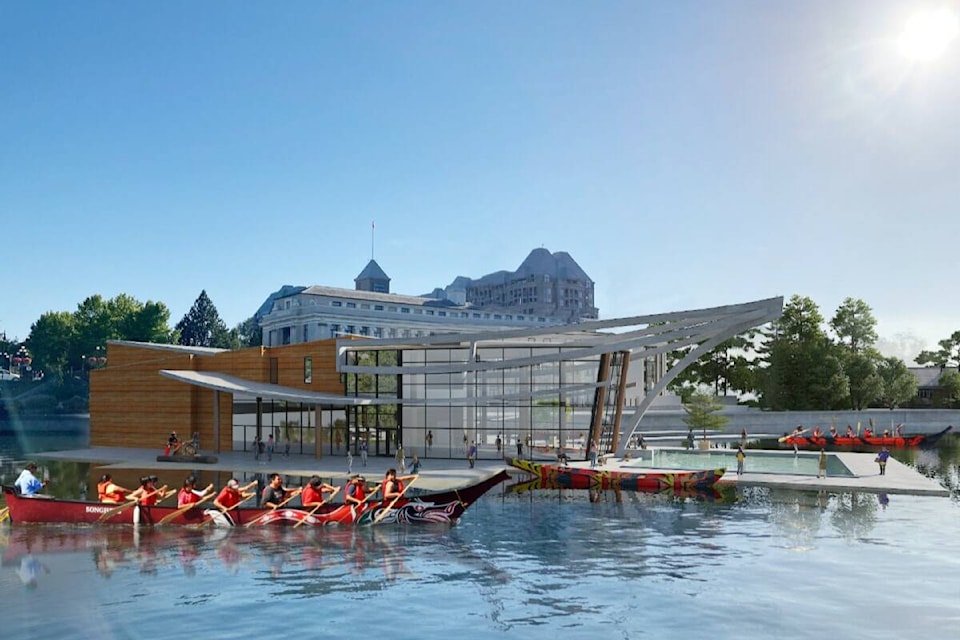A partnership with local First Nations, tentatively dubbed The Future of History, could see a heritage landmark on the Inner Harbour house a re-imagined Maritime Museum of British Columbia.
After years of searching for a new home, the Maritime Museum put together a proposal alongside partners Esquimalt and Songhees Nations to create a new, dual-purpose historical site to reshape how coastal history is presented.
“Across from us is the iconic Steamship building, a beautiful building that, for the last decade, has struggled to find its purpose and best role. As a community asset that we all own, we intend to return this building to public use,” said Jamie Webb, president of the Maritime Museum of B.C. “Together with the Lekwungen people, we will be ready with a world-class cultural experience that will make us all proud as we discover a new and inclusive way to present the future of history.”
The partnership envisions two things: The Steamship Building housing the maritime museum alongside a floating structure dedicated to the Songhees and Esquimalt Nations – offering a Lekwungen welcome centre and exhibit space. This new space would emphasize the local Nations’ presence and deep connection to coastal waters, which dates back thousands of years.
“This has got some serious potential, and the two nations do back this, this dream, and we do hope that others learn the story and really get behind what the Maritime Museum’s been trying to achieve since they vacated the courthouse not too far from here,” Songhees Chief Ron Sam told reporters.
“This opportunity returns the Lekwungen Nations to a place of prominence here in our traditional territory, where residents and visitors will be welcomed and come to understand our proud history,” Esquimalt Chief Jerome Thomas noted in a news release.
The goal is to present Victoria’s four million annual visitors with a more comprehensive account of the region’s history, where the narratives of Lekwungen and settler experiences stand together. With an Inner Harbour facility for Lekwungen Peoples to tell their own story, the exhibit would offer two distinct, yet interconnected, perspectives.
“This project respects the leadership of the Lekwungen Peoples and is a tangible action toward economic reconciliation that benefits everyone in Greater Victoria. This is an excellent example of Indigenous collaboration that serves our region well. We are honoured to have more than 40 Indigenous/businesses among our Chamber membership. The Future of History project will build on that success,” said Bruce Williams, CEO Greater Victoria Chamber of Commerce, in the release.
The Nations and MMBC have established a joint working group to advance the project. At this time, no official agreement with the province has been reached, however negotiations will be completed with the government.
The cost of the project is estimated at $38 million, with potential funding sources including private philanthropic and corporate sponsors, as well as contributions from the federal government.
“I’m excited. I think we’re all pretty darn excited,” Webb added. “You can imagine there’s a lot of work to do, but we’re pleased to have a working group that’s already rolling up their sleeves to make this happen.”
The Future of History project is expected to open in 2029, coinciding with the completion of the Belleville Ferry Terminal redevelopment next door.
Plan your adventures throughout the West Coast at westcoasttraveller.com and follow us on Facebook and Instagram @thewestcoasttraveller. And for the top West Coast Travel stories of the week delivered right to your inbox, sign up for our weekly Armchair Traveller newsletter!



